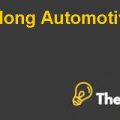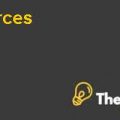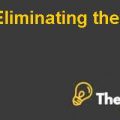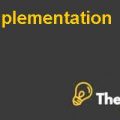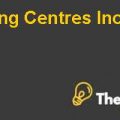
E+Co: A tipping Point for Cleaning Energy Entrepreneurship (A)
1. Opportunity Evaluation
From the case it can be seen that E+CO has several opportunities to exploit in the developing countries given their low income profile and their overall economic profile. It is seen that in developing counties, energy transformation is taking place such that the traditional burning of firewood, kerosene, charcoal and Liquefied Petroleum Gas is now being replaced by cleaner and more energy efficient technologies. These technological transformations were made solely to cater the local needs and demands of the developing countries. It has also helped in developing a value-adding potential such as growing employment and in off-setting tons of carbon dioxide. Another opportunity identified is the use of biomass (a renewable form of energy made by Genetically-modification) to 2.6 billion by 2015 and 2.7 billion in 2030. This shows future heavy reliance on these fuels. Moreover, according to an estimate, usage of energy would increase by 60 percent by 2030 most of which, approximately two third will be used by developing countries. Instilling sustainability in the business is the key success factor today, which is also a question that is raised by investors. Risks are attracting investors and entrepreneurs in the developing countries.
2. Implementation Strategy
The strategic business goal for E+CO is to help the developing countries tackle the energy crises by bringing provision of clean energy to their environment mostly to the households. E+CO can get support from the local government of these countries to help attract entrepreneurs in this strategic implication. For this purpose, the E+CO’s model was inspired by getting support of SMEs (Small and Medium Enterprises) in its implementation. The focus was on making energy available to developing countries and to rural areas where consumer buying power is very low. This is a viable strategy as it focuses on capturing national entrepreneurial support that better understand their country; therefore, it will help in its effective implementation.
3. Management
For this strategic goal the management needs to display rigor in their assessment of the geography they choose to help in sustaining energy. A full financial model needs to be devised to have a rough idea of the estimated budget required. For example, in order to fulfill the needs of energy at a macro level, E+CO needs to have 10 fold increases in its model and it will require its management to attract a 100 fold entrepreneurs to carry its business. Then they need to assess the environmental and societal impact, and replicate it across the energy sector of the target country. The management team at E+CO at present is one that is highly enthusiastic in reducing global warming and its impact primarily on the energy sector. All earlier undertaken projects have been successful and this shows their potential in this sector.
4. Analysis and Recommendations
The analysis suggests that the opportunity is attractive and the implementation plan needs to be more exhaustive. E+CO needs to add in value to the project by engaging financial institutions in the project for funding purposes. E+CO can attract direct investment, broader partner engagement and greater involvement in attracting funds .........................
This is just a sample partial case solution. Please place the order on the website to order your own originally done case solution.
This case describes an approach to E + Co Business Support clean energy in developing countries and its current strategic goal is to expand its business model to reach 100 million of non-performing or not enough people in developing countries by 2020. In the past 12 years, E + Co has been successful demonstration and validation "of the enterprise-oriented model" that offer reliable access and energy efficiency for the poor in developing countries. Her approach to bringing the poor to modern energy stairs, one step at a time, started in response to a complex project to Rockerfeller Foundation, marked a radical departure from the top-down, large-scale infrastructure projects supported by international organizations. So far, the models have left 2.5 million people trapped in a double bind of poverty and energy waste. E + Co approach works well, by September 2006, it has invested in 138 companies in 30 countries. These local businesses are now provided clean power to more than three million people. The next issue of expansion of all, however, it risked straining the resources of E + Co a global team of 38 employees and may change the company's services provided by local businesses. A ten-fold expansion within those constraints require innovative growth strategies. Reference case, E + Co. The path to the scale (B), product 907M55, is a set of business growth strategies that preserve the basic model of "Hide
by Oana Branzei, Kevin McKague Source: Richard Ivey School of Business Foundation 20 pages. Publication Date: August 3, 2007. Prod. #: 907M54-PDF-ENG

